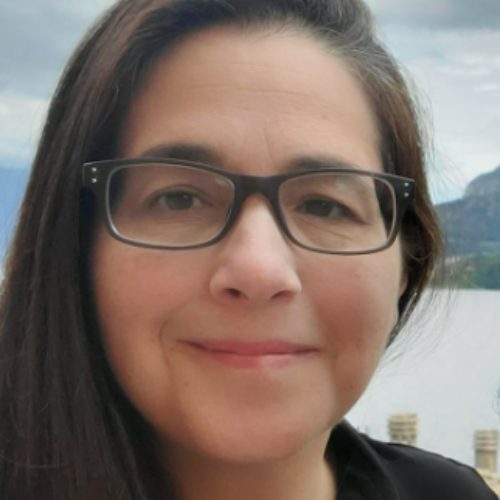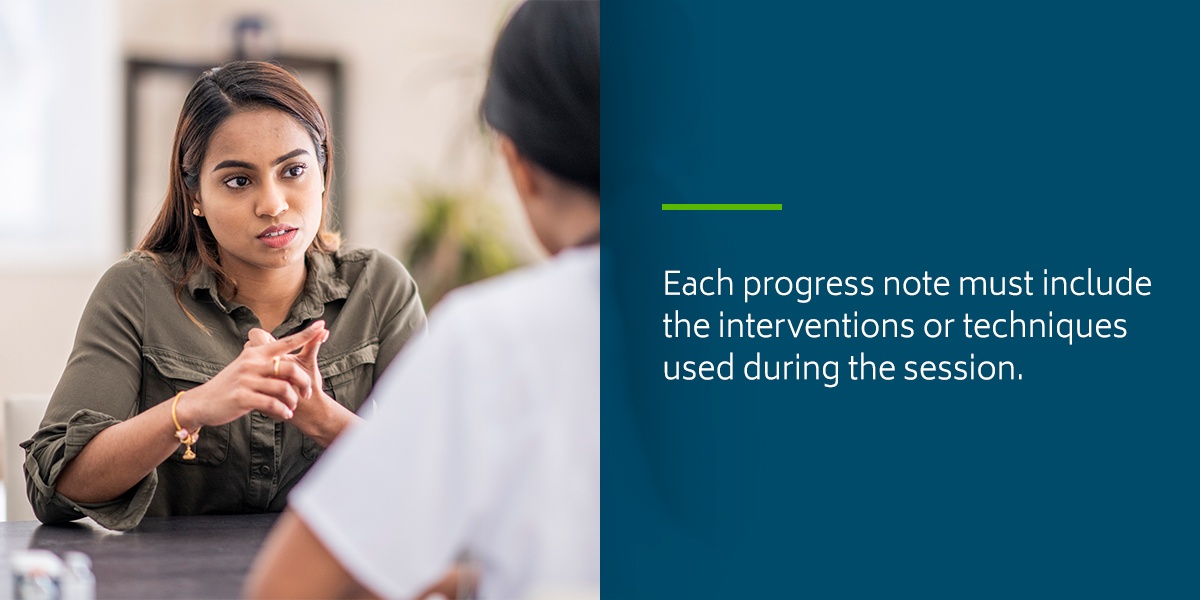Blog > Documentation > The 10 Essential Elements of a Therapy Progress Note
The 10 Essential Elements of a Therapy Progress Note
Accurate and effective therapy documentation is essential for delivering high-quality care and meeting compliance standards. This post outlines the 10 essential elements of strong therapy progress notes to help clinicians write with clarity, purpose, and confidence. Whether you're new to documentation or refining your workflow, these tips will strengthen your clinical records and support better outcomes.

Last Updated: June 10, 2025

Why Therapy Documentation Matters
Writing effective therapy progress notes is more than just a routine task—it’s a critical part of responsible therapy documentation. Clear, structured notes not only support continuity of care but also protect clinicians in the event of audits, legal issues, or insurance reviews. Before diving into the 10 essential elements every progress note should include, it’s important to understand why high-quality documentation matters in your clinical practice.
High-quality therapy documentation serves several vital functions. Clinically, it helps track client progress, identify treatment patterns, and ensure that care is aligned with the goals outlined in the treatment plan. From a compliance perspective, well-documented therapy progress notes demonstrate medical necessity, support billing claims, and help meet the standards of licensing boards and accrediting bodies. In legal or ethical situations, detailed notes can provide essential protection by clearly showing the rationale behind clinical decisions.
In short, thoughtful, thorough documentation isn’t just about checking a box—it’s about improving client outcomes, staying aligned with best practices, and safeguarding your practice. With that in mind, let’s explore the 10 essential elements that make a therapy progress note both clinically effective and legally sound.
Essential Elements of a Therapy Progress Note
Therapy progress notes should focus on what happened during the session, how it relates to the treatment plan, and what’s planned next. Here are 10 essential elements that align with best practices in mental health therapy documentation:
1. Date of Service and Session Duration
Clearly document the date and length of the session (in minutes) to support billing and compliance. In ICANotes, every therapy progress note automatically captures the date and includes easy dropdowns for session start and end times. This ensures accurate time tracking for billing and compliance without manual entry.
2. Client Presentation and Current Mental Status
Briefly describe the client’s mood, affect, behavior, and appearance during the session, especially if different from previous sessions. ICANotes includes pre-configured menus for mood, affect, behavior, and appearance, allowing clinicians to quickly select descriptors that reflect the client’s presentation. The system then generates a narrative summary, saving time and maintaining consistency. A full mental status exam template is also available. Additional menu-driven templates allow the therapist to quickly document changes to symptom frequency, severity or duration as well as the client's behavior and verbal content of the session simply by clicking on menu options — no typing is required.
3. Session Goal and Interventions Provided
Detail the therapeutic techniques or modalities used (e.g., CBT, EMDR, motivational interviewing), and how they were applied in session. With ICANotes, clinicians have access to a broad selection of evidence-based therapeutic interventions (e.g., CBT, DBT, EMDR) via dropdown menus. The platform automatically documents these choices in professional language, reducing the burden of typing out detailed session summaries.

4. Client Response to Interventions
Document how the client reacted or engaged with the interventions you used during the session to address their presenting problem. Were they receptive, resistant, emotional, or reflective? Could they demonstrate the skill you taught them? Were they not interested or did they refuse to participate? ICANotes lets you quickly document the client’s response to each intervention by choosing from customizable response options. These selections generate clear, readable text that reflects the client's engagement and receptiveness.
5. Progress Toward Treatment Goals
Identify whether the session moved the client closer to their treatment goals. Be specific and link observations to measurable objectives in the treatment plan. If there is no progress or if setbacks have occurred, explain why. Use this information to modify the client's treatment goals or therapeutic strategies. In ICANotes, the system helps track and reference treatment plan objectives directly within the progress note workflow. This makes it easy to align session content with goals and document progress using measurable, goal-linked language—crucial for demonstrating medical necessity.
6. Clinical Impressions
Use this section to summarize clinical insights that emerged during the session, including observed patterns, diagnostic clarification, and the client’s current stressors or psychosocial risk factors. ICANotes provides customizable templates and prompts to help organize and express these impressions clearly and efficiently.
7. Risk Assessment
Evaluate and document suicidal or homicidal ideation, intent, and plans with ICANotes' built-in risk assessment tools, including the Columbia Suicide Severity Rating Scale and the Stanley Brown Safety Plan. You can also document the presence or absence of safety concerns, crisis planning, protective factors, and follow-up steps—all in line with best practices and legal standards.
8. Plan for Next Steps
Summarize the focus for future sessions, homework assigned, referrals made, or any adjustments to the treatment plan. In ICANotes, each note template includes a section for planning next steps, assigning homework, or scheduling referrals. ICANotes allows you to select or enter next actions efficiently, and carries them forward into future sessions if needed, helping ensure continuity of care.
9. Private Psychotherapy Notes (Optional)
ICANotes allows clinicians to create and store private psychotherapy notes separately from the client’s medical record, in compliance with HIPAA guidelines. These notes are for the therapist’s personal use and are not shared with payers or included in routine disclosures, offering a protected space for reflection.
10. CPT Codes and Level of Care Justification
Accurately capture the billed service by documenting the appropriate service code or CPT code. In ICANotes, the system prompts you to document session content and clinical complexity in a way that justifies the chosen code and level of care—an essential step in reducing denials and ensuring proper reimbursement.
By focusing on these 10 key elements, clinicians can produce high-quality therapy documentation that supports clinical care, protects against liability, and meets the demands of insurance audits—all while saving time. With ICANotes, every element is supported by smart automation and behavioral health–specific templates designed to simplify your workflow without compromising clinical depth.
Types of Therapy Progress Notes
You can write comprehensive therapy progress notes using one of several standard formats. Your practice likely already has an established format to follow, but if you're starting your own practice, you'll need to consider how to organize your notes.
Here are a few of the most commonly used progress note formats:
- SOAP: SOAP is an acronym for Subjective, Objective, Assessment and Plan. The SOAP format is a widely used note-writing method because it's thorough yet concise. It also serves as a cognitive aid, helping mental health professionals use their clinical reasoning skills.
- BIRP: BIRP stands for Behavior, Intervention, Response and Plan. Like SOAP notes, BIRP notes include a counselor's observations and a plan to help clients reach their treatment goals. But the BIRP format combines objective and subjective details under the behavior section. BIRP notes also focus more heavily on the interventions counselors use to address a client's goals during a therapy session and how the client responds to the intervention.
- DAP: DAP is an acronym for Data, Assessment and Plan. In the data portion, counselors record their observations. They then use the assessment section to interpret the data component and note if the client is or isn't making progress. The final portion describes the plan for future treatment. Some organizations may prefer DAP notes to minimize confusion about subjective and objective elements.
Any of these therapy progress note formats can help you effectively document your clinical sessions and get reimbursed by insurance companies.
How to Write Therapy Progress Notes
Regardless of the therapy documentation format you choose, your notes must demonstrate how your services address the presenting problem and help a client progress. It's also essential that your notes are accurate, clear and thorough to communicate the client's care with other practitioners. Here are a few tips to writing effective progress notes:
- Write immediately after sessions: It's better not to wait until the end of the day to take notes. Instead, writing your notes immediately after each session helps with accuracy and can keep you from feeling overwhelmed. Aim to set aside around 10 minutes after each session for writing progress notes. With ICANotes, it's even possible to write your notes while you are in session with the client since virtually no typing is required.
- Emphasize the most important details: Ensure your therapy progress notes include essential information to jog your memory for the next session. Those details may consist of homework you assigned or interventions you plan to use during the next appointment with a client.
- Be objective: Keep your progress notes as objective as possible. Avoid words like "appears" and "seems" and only include specific and factual information. You'll also want to avoid using judgmental language. Remember, your clients and other clinicians may read your progress notes.
- Be clear and concise: Only include relevant information to keep your notes brief, clear and quick to read. Also, only use approved abbreviations and acronyms. Otherwise, keep your notes as simple as possible.
Make Progress Notes Easier with ICANotes
Therapy progress notes are a vital part of ethical, effective, and reimbursable mental health care—but they don’t have to be time-consuming or stressful. ICANotes is built specifically for behavioral health professionals and offers intuitive, pre-configured templates that let you quickly create clear, comprehensive, and audit-ready documentation. Whether you're using SOAP, DAP, BIRP, or a narrative format, ICANotes adapts to your workflow and ensures every note includes the essential clinical elements.
Our menu-driven system eliminates the need for excessive typing and helps reduce documentation errors, while still giving you the flexibility to customize your notes to each client’s unique needs. With built-in tools for risk assessment, treatment plan alignment, and CPT code justification, ICANotes supports both clinical excellence and billing compliance.
Ready to simplify your documentation?


Start Your 30-Day Free Trial
Experience the most intuitive, clinically robust EHR designed for behavioral health professionals, built to streamline documentation, improve compliance, and enhance patient care.
- Complete Notes in Minutes - Purpose-built for behavioral health charting
- Always Audit-Ready – Structured documentation that meets payer requirements
- Keep Your Schedule Full – Automated reminders reduce costly no-shows
- Engage Clients Seamlessly – Secure portal for forms, messages, and payments
- HIPAA-Compliant Telehealth built into your workflow
Complete Notes in Minutes – Purpose-built for behavioral health charting
Always Audit-Ready – Structured documentation that meets payer requirements
Keep Your Schedule Full – Automated reminders reduce costly no-shows
Engage Clients Seamlessly – Secure portal for forms, messages, and payments
HIPAA-Compliant Telehealth built into your workflow
Dr. October Boyles is a behavioral health expert and clinical leader with extensive expertise in nursing, compliance, and healthcare operations. With a Doctor of Nursing Practice (DNP) from Aspen University and advanced degrees in nursing, she specializes in evidence-based practices, EHR optimization, and improving outcomes in behavioral health settings. Dr. Boyles is passionate about empowering clinicians with the tools and strategies needed to deliver high-quality, patient-centered care.


